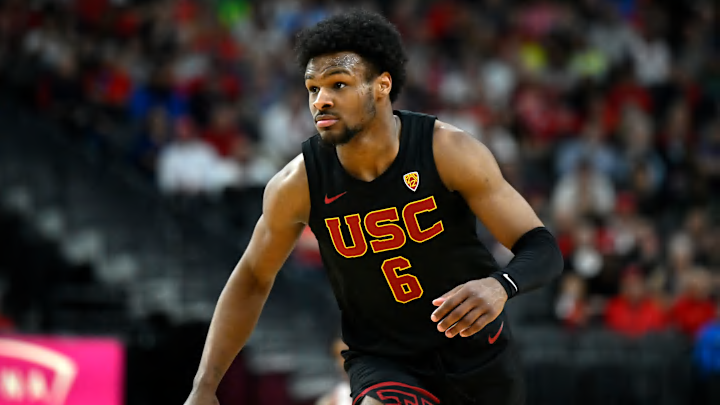The 2023-24 NBA regular season is on its last legs. The Minnesota Timberwolves' sights are set on the postseason as they'll likely be the top-seeded or at least second-seeded squad in the Western Conference.
Plenty of other teams are eyeing the offseason and most importantly, the 2024 NBA Draft. While not the top priority, prioritizing the draft to improve in the offseason is of the essence for Minnesota.
The Wolves are cap-strapped for years to come. This season, Minnesota ranks 28th of 30 teams in cap space. Next season, the Wolves will be dead last, likely $100 million over the salary cap. Signing free agents for anything more than the minimum will be increasingly difficult. Therefore, the draft is where the Wolves can make their mark.
As we've seen in years past, selecting upperclassmen who are ready to contribute is a quality approach to bolster cap-strapped team's rotations. The Miami Heat, LA Clippers, and Golden State Warriors used this approach in last offseason's draft.
However, there's another school of thought. Why not select an underclassman who may not have the same counting stats as upperclassmen but does have more time to grow and develop? Last offseason, the Milwaukee Bucks, Cleveland Cavaliers, and the Wolves used this approach.
This time around, Minnesota might very well use their second-rounder to select a "two years away" prospect. In the upcoming draft, one player fits this narrative better than most. That's Bronny James, the son of LeBron James, who just concluded his inaugural collegiate season playing the USC Trojans.
BREAKING: Bronny James will enter the 2024 NBA Draft while maintaining his college eligibility and will also enter the transfer portal pic.twitter.com/rQnRXClacN
— Bleacher Report (@BleacherReport) April 5, 2024
Yesterday, the younger James announced his decision to enter the 2024 NBA Draft, while maintaining his college eligibility. James will likely test the waters and decide whether he wants to enter the draft or return to elevate his draft stock in college.
As of now, James is, at best, a second-round pick. In his lone season at USC, the freshman guard averaged just 4.8 points, 2.8 rebounds, and 2.1 assists per game. James shot 36.6 percent from the field, 26.7 percent from three, and 67.6 percent from the free throw line.
James' counting stats are not one of a typical prospect. Nonetheless, it's impressive he suited up at all this past season. Last July, James suffered cardiac arrest during an offseason workout. Despite the scary situation, James made his way back to hardwood just four months later.
What James lacks in the stats, he makes up for in intangibles. He possesses great athleticism, superb instincts, and a high motor. In just 19.4 minutes per game, James averaged 0.8 steals. On a per-40-minute scale, this number jumps to 1.6 steals per game.
At 6-foot-4, James profiles as a 3-and-D guard. He isn't necessarily a creator, but more of an off-the-ball player on offense. The USC freshman connected on only 16-of-60 triples this past season. However, his mechanics show there's room for improvement. He's a confident shooter with great elevation and a high release point.
James figures to make the biggest impact in transition. He scored a majority of his twos on the break this past season. James fills the lanes in transition well and makes himself available as a lob threat or cutter on the wing. When he gets to the rim, he's shown he's capable of finishing emphatically. James plays above the rim and finishes better than most players his size.
All in all, his calling card is defense. James has quick hands and good anticipation. He slides his feet well and keeps himself square at all times. Although he's on the smaller side, James displayed a prowess for shot-blocking. He only blocked five shots all season, but each one was highlight-worthy.
James will likely need another year of seasoning before he's ready for the big leagues. But if he does keep his name in the draft, selecting James in the late second round might be worth the risk.
